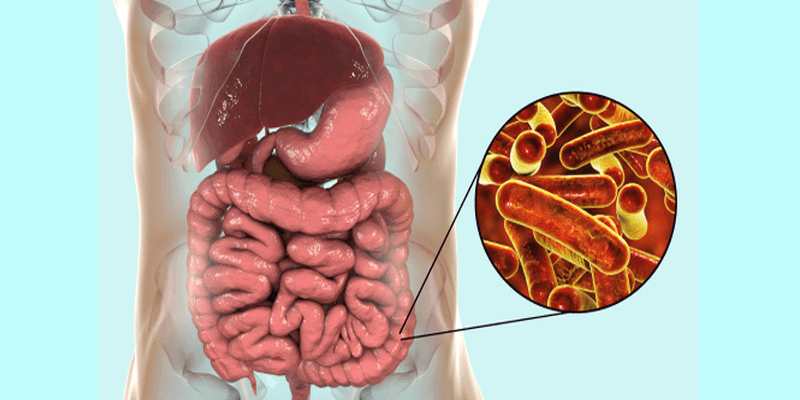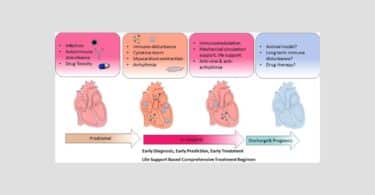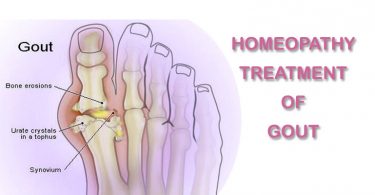Are you looking for a homeopathic cure for dysentery? This article discusses the homeopathy treatment of dysentery along with the best homeopathic medicine for dysentery treatment
What is dysentery?
Severe, often bloody diarrhea, vomitting, fever; life-threatening if untreated. Dysentery is inflammation of the 
Dysentery is a syndrome of abdominal pain, tenesmus, and diarrhea with viscid red white grains as well as pus and blood in the feces. It occurs most commonly in summer and autumn. When blood predominates it is known as “red dysentery”. If pus and blood are comparable in quantity it is known as: red and white dysentery.”
Causes of dysentery
There are two kinds –
- Dysentery caused by a bacterial germ (bacillary dysentery or shigellosis)
- Amoebic dysentery, caused by an amoeba called Entamoeba histolytica.
Amoebic dysentery is caused by Entamoeba histolytica and is common in the tropics or areas that use human excrement as fertilizer.
Bacillary dysentery is caused by bacterial organism, such as shigella, salmonella, or campylobacter, and usually seen in temperate zones. Bacterial dysentery is usually more severe than amebic dysentery.
Symptoms of dysentery
- Dysentery is a more serious form of diarrhea, where the stools are tinged with blood and mucus.
- The diarrhea can be quite severe, characterized by colicky pains and frequent urging.
- Stools can be passed as often as fifteen to thirty times per day.
- The onset is typically sudden, accompanied by a high fever and thirst.
- The illness causes great fatigue and depletion of strength.
- Dehydration is a serious side-effect, especially if the person becomes too weak to drink enough liquids. In cases of amebic dysentery, the symptoms are quite mild, with constipation and diarrhea alternating, combined with some intestinal cramping and gas.
- The danger of an amebic dysentery is involvement of the liver, and can lead to hepatitis, cysts and abscesses.
- These liver problems can remain dormant for many years.
- Amebic dysentery develops more slowly. It causes bloody diarrhea, abdominal pain, and flatulence. The incubation period of bacillary dysentery is from 12 to 36 hours. The patient will suffer abdominal pain and profuse diarrhea with mucus or blood. An occasional side effect of bacillary dysentery is arthritis affecting the knees or ankles.
Homeopathic treatment of dysentery
Homeopathy is one of the most popular holistic systems of medicine. The selection of homeopathic medicine for dysentery is based upon the theory of individualization and symptoms similarity by using holistic approach. This is the only way through which a state of complete health can be regained by removing all the sign and symptoms from which the patient is suffering. The aim of homeopathic medicine for dysentery is not only to treat dysentery but to address its underlying cause and individual susceptibility. As far as therapeutic medication is concerned, several remedies are available to cure dysentery that can be selected on the basis of cause, sensations and modalities of the complaints. For individualized remedy selection and treatment, the patient should consult a qualified homeopathic doctor in person. There are following remedies which are helpful in the treatment of dysentery:
Aloe soc. – remarkable remedy for dysentery; stool contains a lot of jelly like mucus; burning and pain in the rectum after stools; patient is afraid of passing flatus, stool passes instead of flatus; bleeding from rectum. The stools are of a jelly-like mucus, and covered with blood and accompanied by griping in the epigastric region, the amount of mucus expelled is large, and, like Sulphur,it is useful in chronic cases. It is also a splendid remedy in purely inflammatory dysentery and follows Aconite well.
Aconite – In the first stages of dysentery Aconite has proved a useful remedy, and it comes in especially well when the days are warm and the nights are cold. ,The stools are frequent and scanty with tenesmus, the skin is hot and dry and general Aconite symptoms are present.
Thuja – it is one of the best remedies for amoebic dysentery.
Mercurius cor – dysentery and summer complaints of intestinal canal; occurring from May to November; tenesmus: of rectum, not ameliorated by stool; incessant, persistent; stool hot; scanty, bloody, slimy, offensive; shreds of mucus membrane and terrible cutting, colicky pains.
Nux Vomica – frequent urging for stools ceasing as soon as the bowels move; Ineffectual desire
Cinnaberis – dysentery worse every night; bloody mucus stools; much straining; diarrhea with greenish stools, worse at night, protrusion of anus during stool.
Colocynth – in dysentery with tenesmus before the stool; Pain is ameliorated by bending double and hard pressure.
Aconite – complaints when the days are warm and the nights are cold; frequent stools with great tenesmus; small, painful, brown, bloody stools or pure blood passes without stools.
Apis Mel – excellent remedy for chronic dysentery; throbbing in rectum with sensation in anus as if it were stuffed full; infantile dysentery with frequent, painless, bloody stools, aggravation morning; prolapsus ani
Arsenic album – involuntary discharges from bowels of a foetid foul smell, like foul ulcers, with great prostration; evacuation of dark blood preceded by violent screaming, sensation as if the abdomen would burst, before stool.
Capsicum – dysentery in moist weather, aggravation from any current or air, even when warm; violent tenesmus of rectum and bladder at the same time; cutting, flatulent colic, twisting pains about navel, before stool.
Cantheris – This remedy, which produces such an intense vesical tenesmus, also produces a like condition in the 
Colchicum – great remedy for autumnal dysentery; bloody stool with deathly nausea from smelling cooking; great weakness and exhaustion as after exertion; very painful urging to stool, at first only a little faeces pass, afterwards transparent, gelatinous and very membranous mucus, with some relief of pain in abdomen.
Kali Bich – dysentery in spring or early part of summer; tenesmus during and after stool, with much debility and after stool
Nitric acid – diphtheric dysentery; ineffectual urging with burning in the rectum; stool bloody with mucus; putrid, mucus, after which the tenesmus continues, followed by headache
Muriatic acid –dysenteric stools; blood and slime separated; as soon as he begins to move strong urging compels haste, Stools profuse, dark brown.
Sulphur – For persistent or chronic cases of dysentery Sulphur is the remedy; the tenesmus continues, in fact there is a sort of tenesums all the time, the stools are slimy and there is frequent sudden urging to stool. Sometimes this condition is present without the tenesums.
Reference:
ü Essentials of Chinese Medicine, Volume 3; Zhanwen Liu; 2009; 121
ü Lippincott’s Guide to Infectious Diseases; Lippincott; 2010; 94
ü Encyclopedia of Family Health; David B. Jacoby, R. M. Youngson; 2004; 533
ü Select your remedy, Rai Bahadur Bishambar Das; 2007; 303,304
ü Illustrated guide to the Homeopathic Treatment; Dr H.S Khaneja; 2010; 226,227
ü Allen’s keynotes, H.C Allen; 2004; 200
ü Homoeopathic Therapeutics; Samuel Lilienthal; 1998; 342.343
The above information about homeopathy treatment of dysentery is only for information purpose. Please consult a professional homeopath before taking any homeopathic medicine for dysentery.
Dysentery Cases Cured with Homeopathic Medicine
Bacillary Dysentery in a Young Child – by Hitesh Shah
Acute Severe Bacillary Dysentery with Diabetic Ketosis And Dehydration – by Meera Belsare







Its been great that you provided this post for all. God bless you doctor.
Really, the great and useful article.